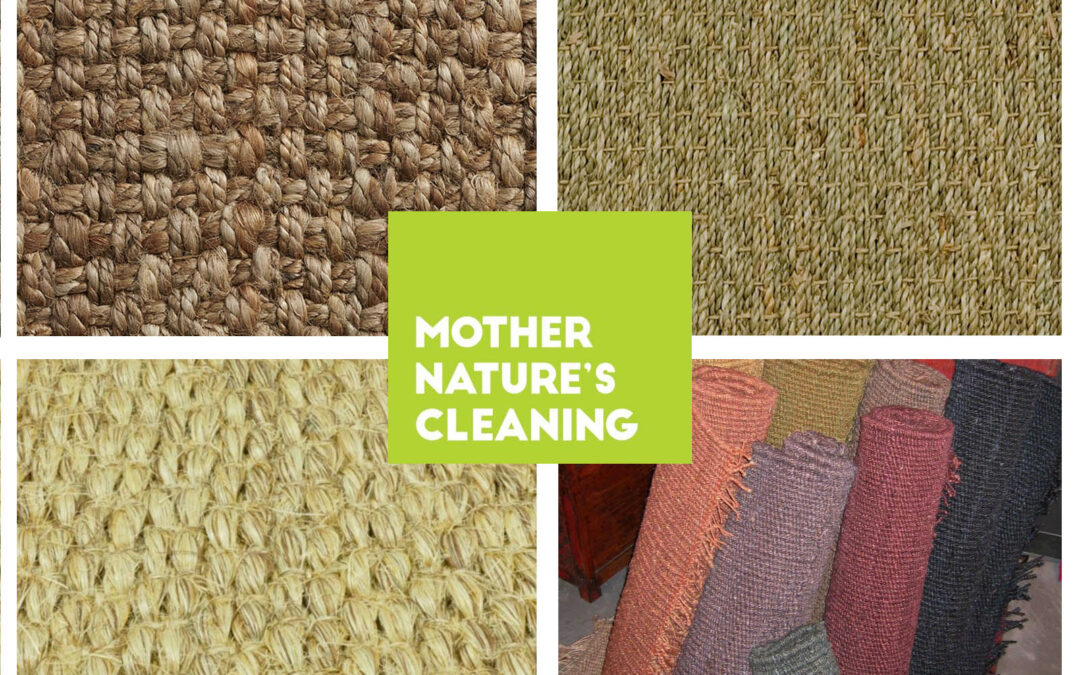We see a moderate amount of grass type rugs and wall-to-wall carpeting. We also see a lot of posts promoting them as an easy to clean and sustainable option, both concepts which we support heavily, but the latter about which we raise an eyebrow.
While wading through all of the AI generated posts about sisal and jute and all these other fibers – and giving myself a splitting headache – I decided that I would take a more outlined approach to this blog post.
Below is a list explaining each of the different types of fibers, what they are made from, the pros and cons, and a link to some cleaning tips. Enjoy!
Sisal
Made from the agave plant.
Pros
- It’s durable and great for high traffic areas
- It’s a sustainable material
- The fibers are very dense so they don’t tend to trap dust and other allergens
Cons
- It is very tough fiber, and not very comfortable underfoot.
- It is highly absorbent, so spills are quickly soaked into the carpet to remain forever
- It holds onto all spots and stains from dirt and substances. So while we can clean it, it never really looks clean once it’s been soiled.
Jute
Made from an Asian grass. They take the center of the stalk and process it and then weave into rugs. It is also a common backing for wool wall-to-wall carpeting.
Pros
- It is also a very renewable resource and will biodegrade after disposal
- It can be dyed, so it is available in different colors
- It is softer than sisal, but not the best choice for high traffic areas
- Affordable
Cons
- Jute does not react well to water, it can shrink and tear and it will turn brown or greenish.
- Jute rugs shed a lot, especially when they are new. But even an old jute rug will shed.
- Just like sisal, once a jute rug becomes soiled. There is no undoing it.
- Requires a lot of maintenance (see tips)
Seagrass
Made from a flowering plant that grows in underwater meadows in the Asia Pacific Region.
Pros
- It is grown quickly and without pesticides, making it non-toxic, biodegradable and sustainable.
- Seagrass is non-porous so it doesn’t attract dust and is great for those with allergies
- It is also stain resistant also because it is non-porous, making it a great option for high traffic areas
- It is a durable and strong fiber.
Cons
- Seagrass does retain moisture if kept in a high humidity area, so not great for areas like Mill Valley or Mount Tam. Probably not great for near the water either, so no Sausalito or Stinson either. They have a tendency to mildew or mold in wetter climates.
- It only comes in one color – natural.
- It can become slippery over time, so it is not ideal for stairs or sloping surfaces.
- It tends to be cold to the touch, so in cooler climates, like ours, it may be a bit chilly on your toes.
Hemp
A botanical class of cannabis specifically designed for industrial use. We have all heard of the many uses of the hemp fiber. It really is a great option.
Pros
- Hypo-allergenic
- Sustainable as it is one of the fastest growing plants in the world.
- Durable
- Comes in many colors as it can be dyed with vegetable dye.
- Moisture and Mildew Resistant.
- Not difficult to clean and often blended with wool for more longevity.
Cons
- Prone to shedding if not well made
- Colors are muted and not vibrant
While they vary slightly, the general rule of thumb with grass type rugs is that they are affordable, sustainable and durable in terms of wear and tear. They are a cozy option and while they may not all be easily cleaned, the natural patina of a maintained but well loved rug or wall to wall natural fiber carpet still has some appeal. We recommend them for homes without pets, and perhaps with school age or older children!
Happy cleaning!

